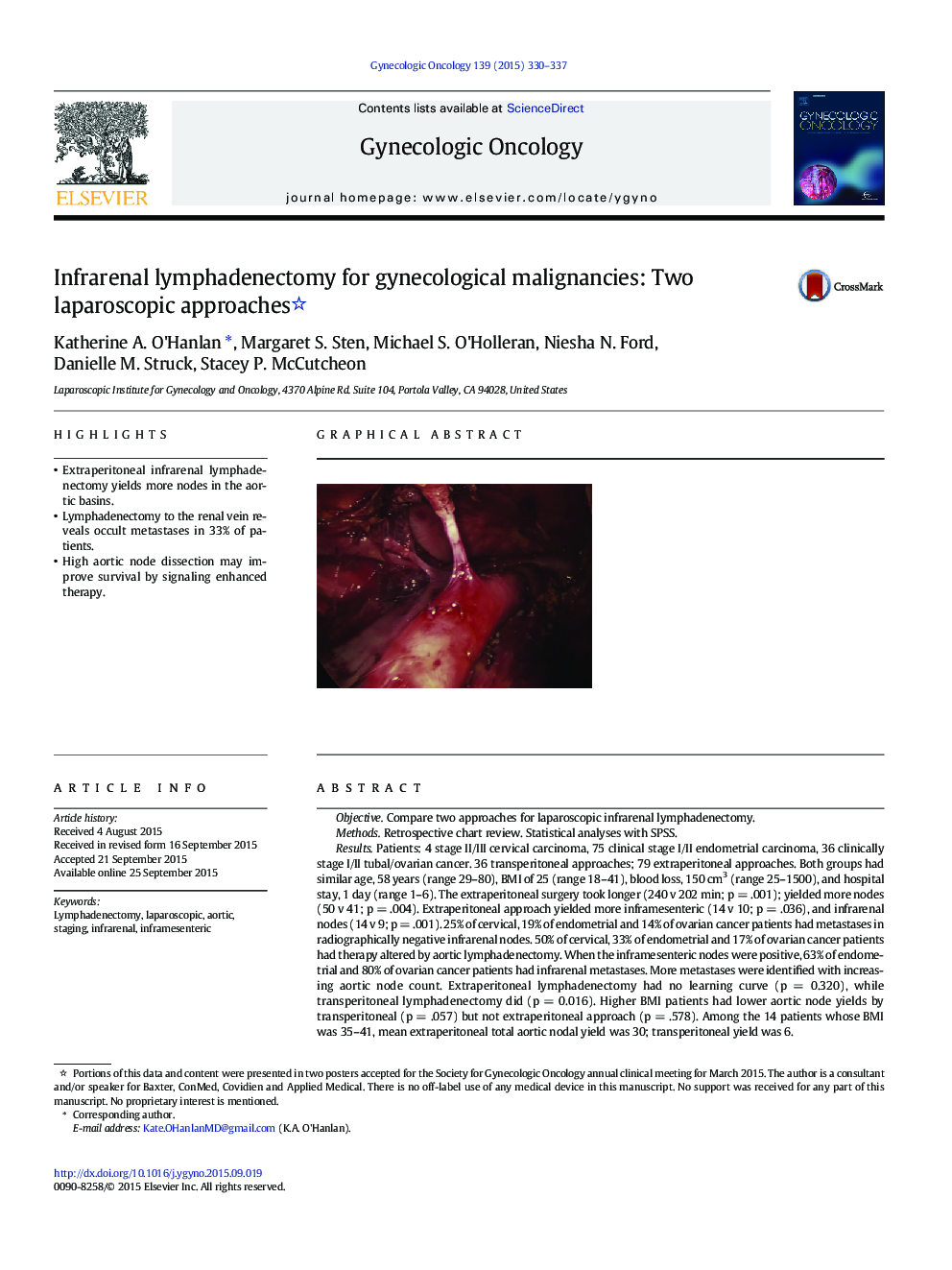| کد مقاله | کد نشریه | سال انتشار | مقاله انگلیسی | نسخه تمام متن |
|---|---|---|---|---|
| 3943066 | 1254070 | 2015 | 8 صفحه PDF | دانلود رایگان |

• Extraperitoneal infrarenal lymphadenectomy yields more nodes in the aortic basins.
• Lymphadenectomy to the renal vein reveals occult metastases in 33% of patients.
• High aortic node dissection may improve survival by signaling enhanced therapy.
ObjectiveCompare two approaches for laparoscopic infrarenal lymphadenectomy.MethodsRetrospective chart review. Statistical analyses with SPSS.ResultsPatients: 4 stage II/III cervical carcinoma, 75 clinical stage I/II endometrial carcinoma, 36 clinically stage I/II tubal/ovarian cancer. 36 transperitoneal approaches; 79 extraperitoneal approaches. Both groups had similar age, 58 years (range 29–80), BMI of 25 (range 18–41), blood loss, 150 cm3 (range 25–1500), and hospital stay, 1 day (range 1–6). The extraperitoneal surgery took longer (240 v 202 min; p = .001); yielded more nodes (50 v 41; p = .004). Extraperitoneal approach yielded more inframesenteric (14 v 10; p = .036), and infrarenal nodes (14 v 9; p = .001). 25% of cervical, 19% of endometrial and 14% of ovarian cancer patients had metastases in radiographically negative infrarenal nodes. 50% of cervical, 33% of endometrial and 17% of ovarian cancer patients had therapy altered by aortic lymphadenectomy. When the inframesenteric nodes were positive, 63% of endometrial and 80% of ovarian cancer patients had infrarenal metastases. More metastases were identified with increasing aortic node count. Extraperitoneal lymphadenectomy had no learning curve (p = 0.320), while transperitoneal lymphadenectomy did (p = 0.016). Higher BMI patients had lower aortic node yields by transperitoneal (p = .057) but not extraperitoneal approach (p = .578). Among the 14 patients whose BMI was 35–41, mean extraperitoneal total aortic nodal yield was 30; transperitoneal yield was 6.ConclusionsInfrarenal aortic lymphadenectomy may offer higher aortic nodal yields, even in patients with BMI's of 45. Larger prospective studies are needed to confirm whether this dissection in high-risk patients ensures more accurate therapy, and possibly improves cure rates.
Figure optionsDownload as PowerPoint slide
Journal: Gynecologic Oncology - Volume 139, Issue 2, November 2015, Pages 330–337